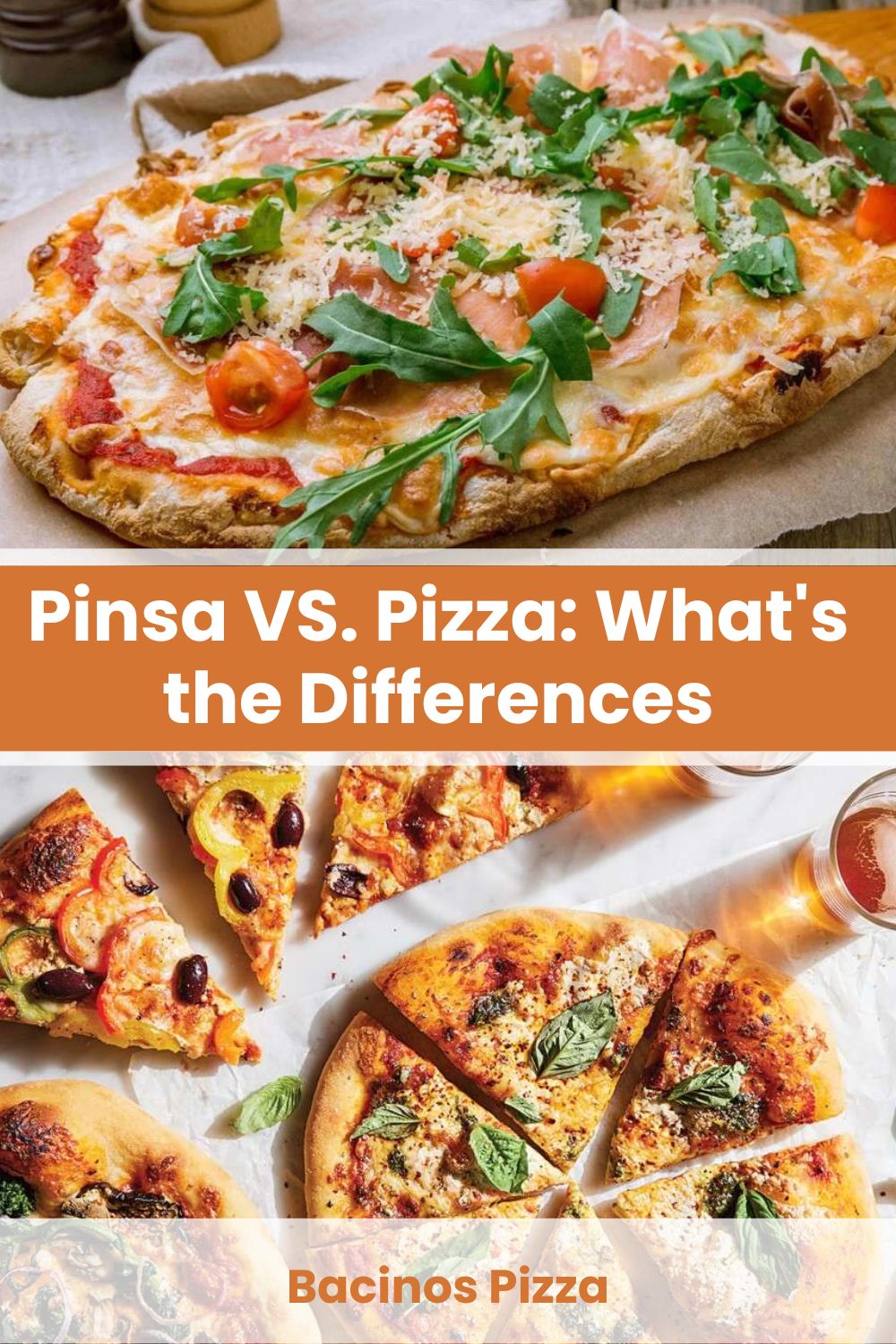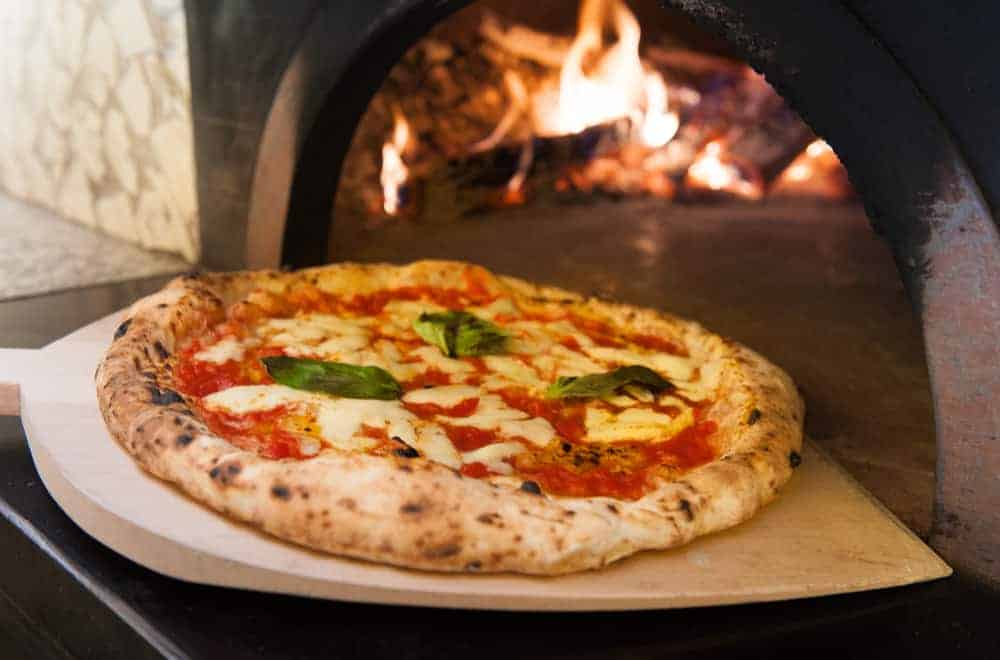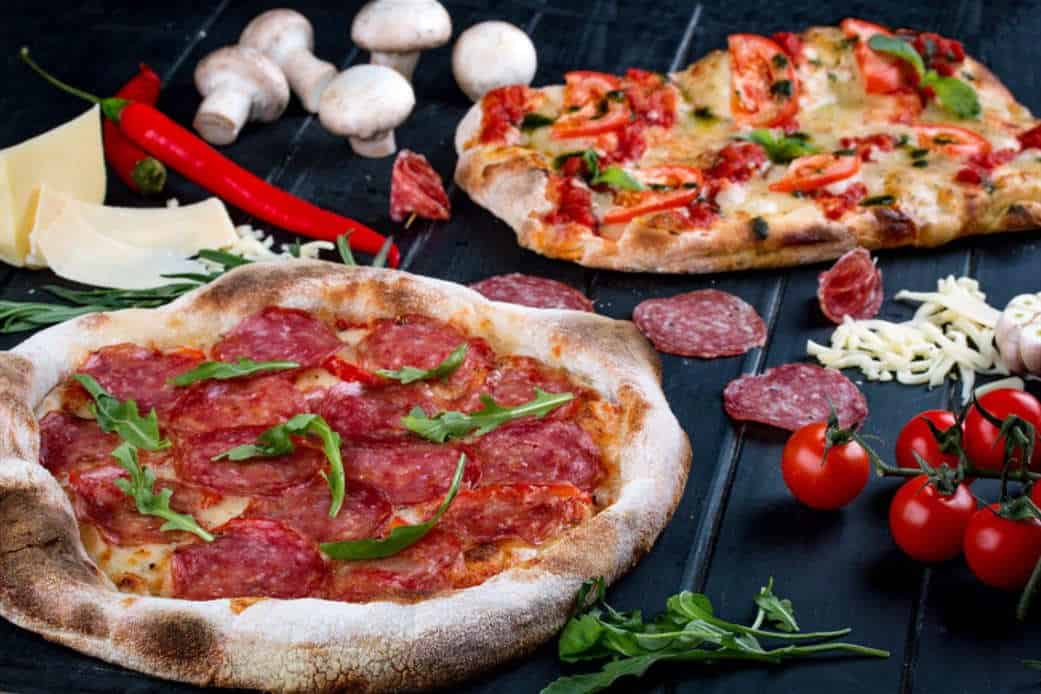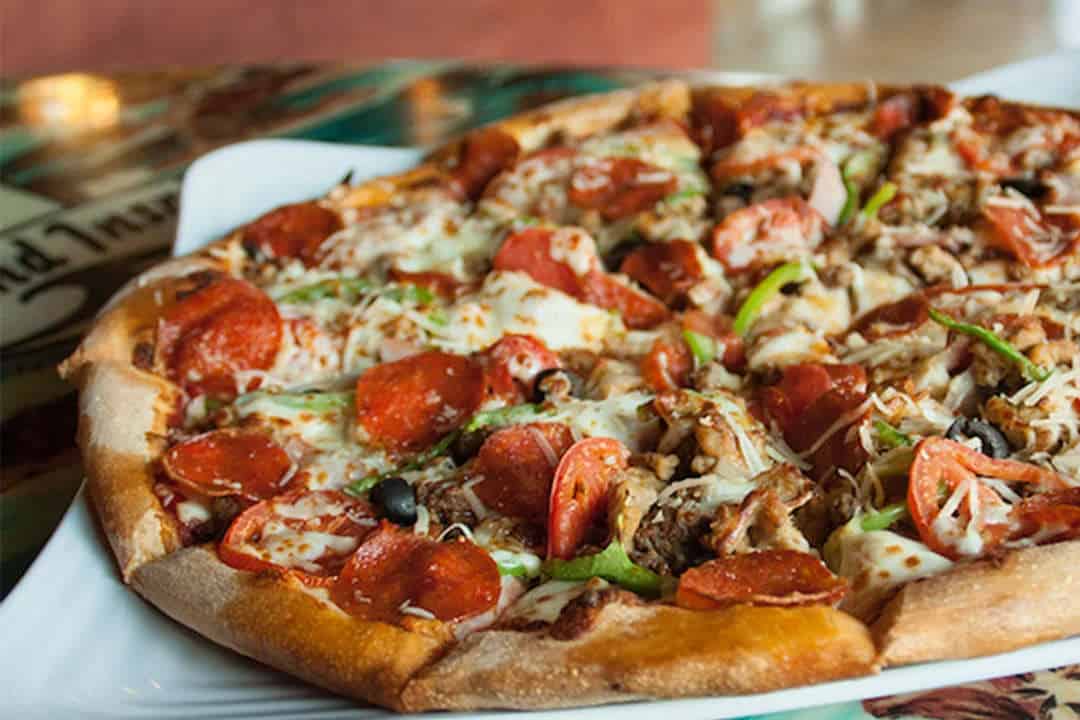It is unsurprising to say that we might all be fondly familiar with pizza because of its delicious taste and versatility but did you know that these days there is another kind of dough that’s recently been making its comeback, it’s nothing but pinsa!

But what exactly is pinsa, and is it the same as pizza? If you wish to know more about how pinsa differs from pizza, we’re going to dig deeper and explain all their differences in detail!
What is Pinsa Romana?

Pinsa Romana is considered a part of Italian delicacy, specifically, a Roman flatbread with a unique, cloud-shaped crust just starting to be discovered outside Italy.
Its name comes from the Latin word “Pinser,” referring to the method by which the dough is traditionally baked inside the wood-fired oven. Although pinsa has the same appearance as traditional pizza, as the two look exactly the same at first glance, this Roman flatbread possesses unique characteristics.
Pinsa is a variant of Italian pizza, made using a flour blend that is different from the regular pizza dough we are all familiar with. This flour mixture used in making pinsa recipes is usually composed of rice, wheat, and soy flour.
And yes, this unique flour blend is the number one reason pinsa’s flavor and texture differ quite from pizza. On top of everything, pinsa calls for less tomato sauce than traditional pizza recipes, allowing its toppings to get the spotlight and shine in every bite.
What is Pizza?

On the other hand, pizza is a kind of Italian flatbread usually topped with two infamous ingredients, cheese and tomato sauce. Unlike pinsa, that’s produced from a bunch of different combinations of flour, chefs and food experts make pizza out of water, flour, and yeast.
Other common ingredients of this Italian flatbread, the pizza, such as salt, olive oil, and sugar, can also be added to the dough. And once the pizza dough is finally prepared, it will be rolled out and placed on the baking pan.
In addition, pizza recipes call for different types of sauces. Still, without a doubt, tomato sauce is the most typical one. Once the sauce is added to the pizza dough, standard toppings such as pepperoni, olives, onions, mushrooms, and cheese will also be added.
Which Came First-Pinsa or Pizza?
The history of pizza is vibrant, just like the history of human civilization. Over the years, there have been a bunch of reinventions and discoveries of this flavorful dish hanging around one way or the other since ancient human civilization. Take pinsa as an excellent example; this Italian flatbread has formed a considerable part of the human diet since the first century.
And yes, you heard me right! Pinsa has been there long before pizza; however, it was not quite famous and consumed similarly to pizza. Experts said that humans began to add and include grain flour in their food diet to fight the scarcity of resources. This scarcity situation partially led to the invention of pinsa.
Since there was not enough available food to feed many families or a large group of people, ancient human civilizations started recycling and combining whatever was available to create dense but nutritious food. Among these foods was none other than pinsa.
The Key Differences Between Pinsa and Pizza

Now that we all have a clear understanding of what exactly are pinsa and pizza and their rich history, let’s take a closer look at the remarkable and noteworthy characteristics that make them unique and special from each other.
Ingredients & Texture
The first thing we should consider when discussing pinsa and pizza is the striking difference between the ingredients making up these two flatbreads. Having said this, let’s take a look at their dough composition. While pinsa is made from several combinations of rice, soy, spelt, and wheat flour, pizza is baked using water, salt, yeast, and wheat flour.
Most of the time, salt and olive oil are added to the pinsa’s dough, which is left to sit for about twenty-four hours. Conversely, the pizza’s dough is left to rise for only a few hours and, later on, flattened and wrapped with different toppings of choice like meat, vegetables, and cheese.
Furthermore, the dough of pinsa is much crispier and harder, while the pizza is usually chewy and soft. Thus, these different ingredients of pinsa and pizza pave the way for their slightly different texture and flavor.
Shape
Pinsa is commonly found oval-shaped with a circumference size of about fourteen to sixteen inches with a flattened edge. This is because pinsa are not rolled out compared to pizza due to the high-water content of its dough. It is often pressed down than rolling it. This now results in pizzas that are usually round with a flattened age and a circumference size of about ten to twelve inches.

Toppings
Pinsa is regularly topped with various ingredients ranging from fruits to vegetables to cheese and ham. Thus, it usually incorporates healthier options because it aims to have fewer calories than a pizza.
In contrast, traditionally, pizza is topped with cheese, vegetables, tomato sauce, and meat like sausage and pepperoni. It is, however, also the same as pinsa at some point since it can be overloaded with the same toppings as pizza, or one can leave it plain and simple.
Crust
The crispiness of the pinsa’s base contrasts but blends well with its fluffy and soft interior, making it perfect for those who like thick pizzas but with a doughy twist and texture. As the dough is made using natural and organic oils as well as fewer shortenings and preservatives, pinsa crust will be healthier in option plus.
Pizzas, on the other hand, are characterized by distinct softness and chewiness. This is the result of using gluten, mainly with high-protein flour, as the base ingredient for the dough.

Taste
Due to the different ingredients and toppings used, it would not be a surprise that the two flatbreads have unique tastes or flavor profiles. Pinsa usually comes in a delicate, savory, but slightly sour taste; Sweet notes are absent on pinsa as sugar is not used. But unlike pizza, it has less sauce, resulting in lesser tomato flavor, while the toppings’ and crust’s taste will take over your mouth. The ingredients of pinsa crust would significantly differ in flavors from pizza siding from earthy to slightly tangy.
On the other hand, pizza tastes delicious with a strong flavor of salty, mildly sweet taste. It is dependent on the toppings themselves as its crust is made from simple ingredients like flour, which results in a simpler taste. However, this crust would hold overloaded toppings, depending on your preference.
Nutritional Value
Since its dough is made out of whole wheat flour, it is without a doubt that pinsa would be much healthier than a pizza. On top of everything, pizza tends to have higher calorie components because of the addition of loaded toppings and cheese.
For better comparison, let’s have a quick but closer look at the nutritional value of these two Italian flatbreads. In general, a slice of pizza usually contains around two to three hundred calories, while, on the other hand, one slice of pinsa has only around one to two hundred calories.
And again, these differences in calories all boil down to the fact that pinsa and pizza are made of different ingredients in their dough and toppings.
Cooking Method
Typically, pinsa is cooked using an electric oven at a lower temperature of around 375 degrees Fahrenheit for about twenty-five minutes. This slow baking method lets the pinsa better absorb all the flavor, resulting in a more tender and moist crust. In contrast, pizza is usually cooked inside a wood-fired oven at a much higher temperature of 400 to 500 degrees Fahrenheit for two minutes.
If you want a quick recap of the crucial factors that makes pinsa and pizza different but unique and extraordinary from each other, watch this YouTube video brought to us by Bbuona Academy!
Pinsa vs. Pizza- A Comparison Chart
Now that we discovered and learned about the key differences between pinsa and pizza, we’ve created a table as a quick reference guide to further break down the details:
| Criteria | Pinsa | Pizza |
| Type of Dough | Unleavened or leavened | Leavened |
| Type of Oven Used | Electric & high heat | Brick & electric |
| Flavor Profile | Sweet, earthy, nutty, or sour | Bready & sweet |
| Proofing Time | 3 days; | 1 day |
| Texture | Crispy & Soft | Airy & fluffy |
| Shape | Oval-shaped | Round |
| Nutritional Value per slice | 100-200 calories | 200-300 calories |
Is Pinsa a much healthier alternative than pizza?

Definitely a Yes! Pinsa is the go-to snack of healthy foodies that craves pizza that has lower calories. Everything is natural and organic from just the dough itself, without any preservatives, additives, or shortenings, which is a healthier option for pizza.
Why is the Pinsa dough much more digestive and lighter than the pizza dough?
Pinsa dough is mainly made from soy, rice, and wheat flour and uses all organic oils. All these natural ingredients have lesser protein than gluten which pizza dough is made from. This would result in a hydrated, low-carb, and low-calorie dough that is healthier and easier to digest.
Final Words on Pinsa and Pizza: Which One to Choose?
In conclusion, pinsa would undoubtedly make a unique but delicious alternative to pizza that’s genuinely worth the shot if you have the chance. While it may not be as famous as the traditional pizza we regularly have, we’re sure that pinsa will continue rising in fame and dominating the food market over the next years.
The truth is that pinsa and pizza are both mouthwatering, but they are marked with significant differences. If you want nothing but a classic Italian flavor, go with pizza. But if you like trying something different and have something Roman-style, pick pinsa instead. Still, you must remember that it ultimately boils down to personal preferences!

Barbara is an enthusiastic food-exploring person that goes through different culinary experiences. She got inspired by creating a pizza blog post after she tasted one of the best-selling pizzas in Toledo.